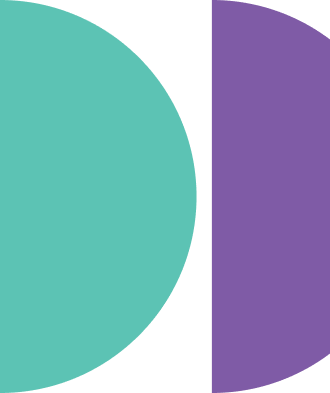By Adrian Moise, CEO of Aequilibrium
In Brief: Forge Migration Reality Check
- If you’re only talking about platforms—not CMS, CRM, analytics, or cloud—your migration conversation isn’t strategic yet.
- CU tech leaders are shifting focus to answer “What CMS, CRM, cloud, and data model will futureproof our member experience?”
- The vendor landscape has shifted mid-year, across VeriPark, Intellect Design, Temenos, and Plumery
- With Q1 2026 go-lives approaching, CU executives must align by October 2025 on architecture, partner support, and internal readiness — or risk falling behind
8 months ago, ‘Forge Migration’ was still a speculative conversation for many IT teams. Fast-forward to mid-2025, and reality is hitting — with real deadlines, tighter delivery windows, and a growing understanding that replacing Forge is not a simple swap. Credit union (CU) technology leaders face a multilayered decision-making process, ranging from architecture choices to vendor risk profiles.
In our countless conversations on the subject, like at our Aequilibrium (AEQ) April webinar on Forge migration readiness, during our time as an exhibitor at the Canadian Credit Union Association (CCUA) conference, and even globally with digital innovators at the World Credit Union Conference (WCUC) in Stockholm, one thing has become undeniable:
Forge migration isn’t just about replacing tools — it’s about reimagining your digital foundation.
From Vendor Search to Platform Architecture
CU tech leaders have shifted their top-of-mind question from “Which platform should we pick?”
Now, it’s a vital series of questions:
- “What’s the digital strategy that will enable our business goals and provide organizational agility?”
- “Who are the strategic partners that will enable us to create a holistic and frictionless experience across all our channels?”
- “Which vendors with international experience, local presence and expertise will help us get there without creating future bottlenecks?”
This transition reflects that Forge Migration isn’t just about picking the right Digital Banking Platform (DBP), but also:
Rationalizing your tech stack (Java/.NET/PHP compatibility) and cloud infrastructure (Microsoft Azure, Google Cloud, or Amazon AWS) hosted in Canada
Simplifying and integrating the digital experience across digital banking and public website
Avoiding vendor sprawl and integration complexity
Setting the foundation for AI-readiness and modular architecture
Platform Players: An Updated Landscape Snapshot
So as a first step, how do you pick the right DBP?
It is crucial to make the choice that best supports everything downstream which delivers your ideal digital member experience. This means you have to know the vendors that are out there by getting a lay of the land.
Here’s how things have unfolded as of mid-year
VeriPark: Launched a four-institution coalition in January with DUCA, First West, Prospera, and Coastal. Today, only two remain, with Prospera mid-merger and DUCA reevaluating. A new VeriPark User Group will replace the old coalition.
eBankIT: Quietly building momentum. Known for flexibility and API maturity. Actively pursuing Tier 1 and 2 CUs, with CGI playing a supporting role in Canada.
Intellect Design (ID): Took over Forge operations from Central1 in March. They’re targeting large players (e.g., Vancity) but face delivery delays and resource strain—good depth, but potentially limited flexibility.
Temenos Infinity: Gained traction through the engagement with FirstOntario’s. A premium solution, technologically modern (with the acquisition of Kony in 2019), but complex. With the right Canadian delivery partner, its global scale, expertise and integrations with the Temenos core can become a solid option for the larger CUs.
Plumery: Modern, API-first platform with modular components and design control. We’ve worked closely with Plumery to accelerate Canadianization. Ideal for CUs wanting future flexibility without excessive complexity.
Want to learn more about the ideal DBP for your CU?
Contact us to book a 30-minute session with our Forge Migration team to help you evaluate, – like your very own DBP Personal Shopper!
Old Plans Won’t Work. It’s Time for an Integrated Digital Strategy.
The old-school plan for handling Forge Migration was to compare DBP features one-by-one. Instead, let me introduce you to a better approach:
Old Thinking
Future Tech Thinking
Swap Forge with another DPB
Build a holistic digital strategy across DPB, Content Management System (CMS), analytics, Customer Relationship Management (CRM) and marketing automation. This provides a simple and consistent experience across all channels
Add on a new CMS/CRM at a later time
Architect integration from day one, enabling holistic user journeys and data-driven personalization
Accept vendor-led UX for cooking-cutter experiences
Define your own customer journeys to reflect your brand, enable differentiation, and attract your members while maintaining your current user base
Siloed delivery partners
Minimize hand-offs across your tech stack
Juggle a wide array of tech stacks and cloud providers
A holistic enterprise architecture, and tech stack compatibility with in-house skillsets
The Blindspot Trifecta: Public Site, CMS and CRM
A major blind spot for many CUs is their public website. As it stands, Forge bundled CMS and analytics, which are separate and distinct platforms.
This should be repeated and greatly enhanced in your new platform to create an holistic enterprise architecture spanning over an extensible DBP, a modern CMS, an insightful web analytics, and a flexible CRM platform. By doing so, you will successfully simplify and integrate the digital experience across your digital banking and public website.
In other words, in addition to the DBP, you must also select:
A CMS, like Adobe Experience Manager (AEM), Sitecore, or WordPress, that integrates cleanly with your DPB
A CRM that aligns with your member journey strategy (like Creatio, or Microsoft Dynamics)
A way to centralize member insights across public + private experiences
If this sounds like a digital transformation program — it is.
Replacing Forge without solving for CMS, CRM, or data is like hitting “I’m feeling lucky” on your digital future. That's not a strategy — it’s a gamble.
What We’re Seeing Across CU Tech Teams
Here’s what Canadian CU Chief Information Officers (CIOs) and technology executives are asking us for:
Stack alignment audits — what platforms and cloud services fit our existing infrastructure?
CMS/CRM interoperability — how can we reduce integration complexity, while enabling data-driven personalization?
Capacity and sequencing — how do we avoid blocking dependencies, while enabling business agility?
Dev/QA automation support — how can friction be reduced during and after launch, and avoid user backlash, as we have seen during some recent DBP launches?
Open data strategy — how do we prepare for AI and automation without creating silos?
AEQ’s Approach to Platform Engineering
As a Canadian technology leader with local resources and expertise, we take a systemic and holistic approach. This is supported by our international skillset and diversity of thought.
For us, Forge migration isn’t just about DPB implementation or feature parity with a platform that’s already a few years behind. Instead, it’s about:
Designing for resilience, interconnectivity, and future growth
Building modular, secure, and scalable components, ready for Open Banking
Creating simple, consistent and personalized experiences across all channels
Accelerating with prebuilt frameworks, connectors, and automation
Reducing delivery friction by minimizing vendor sprawl
2026 Delivery Starts Now: Technical Must-Dos by Fall 2025
November 2026 is the Forge Migration deadline for many CUs. To hit these deadlines, you need to complete the following steps by October 2025, so you can start DBP development in Q1 of 2026:
Align your executives in order to implement i) Proof of Concept validation, ii) conduct due diligence and procurement to select the right DBP, and iii) secure board approval
Define Enterprise Architecture (e.g., .NET vs. Java, integrated vs disconnected systems) and Cloud Strategy
Align on CMS/Analytics/CRM
Plan for internal readiness and capabilities
Ensure security, compliance, scalability, and extensibility
Let’s Get You Moving
Together, we can design a digital foundation that works for your members, your team, and your future.
Book a 30-minute strategic session with our Forge Migration team to get started.





